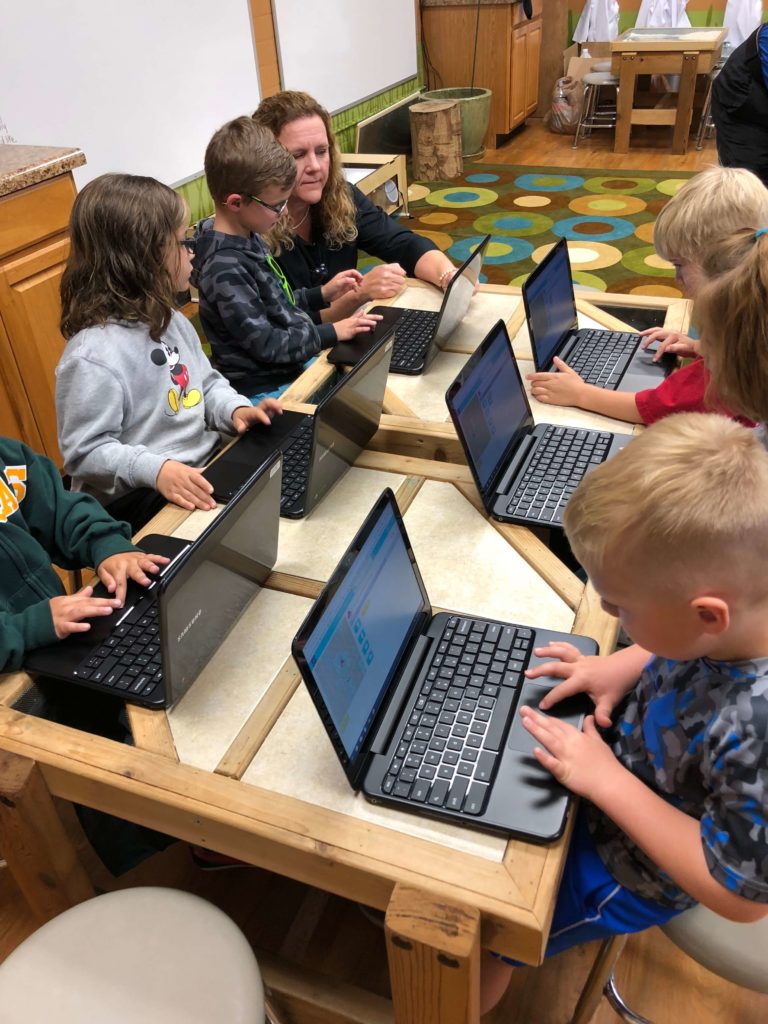Because we live in such a technologically savvy society, children are more advanced at using technology than ever before. Each year we like to introduce coding to our preschoolers, so they are exposed to the process of how computers function and what it means to code.

Mr. Lindauer, our Technology teacher here at St. Luke’s, comes over to the preschool and helps our 4 and 5 year old classes learn how to code. He introduces a very simple coding program where students drag directional blocks onto an instructional section to tell a bird how to get to the pig. The levels start out easy with one or two sequences of directions and increasingly get harder. They have to learn to connect all the directional blocks together or else the sequence is incomplete and therefore the bird does not know which direction to go. They also learn how to plan out how many blocks they will need for the bird to reach the pig. Even when they don’t get it just right the first time, they learn to go back through their sequence and realize that they used the wrong directional block or they have one too many or too few of the blocks. The children are also using mouse pad computers instead of touch screen, so they are able to practice their fine motor skills with clicking and dragging the blocks. It can be frustrating at first because most children are used to touch screens, but once they get the hang of it, it gives the children a sense of accomplishment and mastery of a skill they did not know how to do before.

The benefits of teaching coding to young children are endless. It engages their logical thinking skills which can help them to be more innovative and solve problems more efficiently. Because this program encourages a more structured way of thinking, the children are able to break down the program into a step-by-step process which can also be a helpful way for them to learn sequencing. With this coding experience, it enables children to gain advantages in how they think and communicate which can then translate into success in their later lives and eventually their career paths.